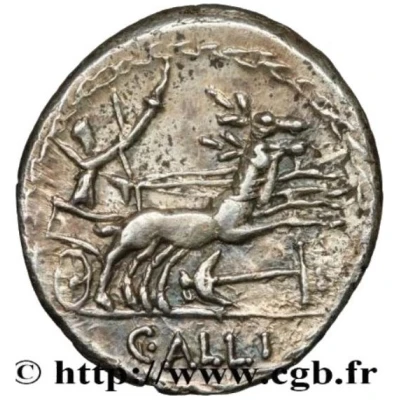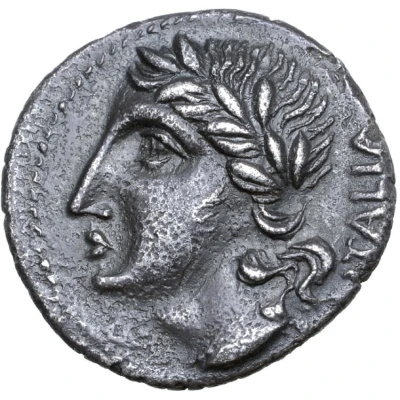


© Heritage Auctions
Denarius Junia: Decimus Junius Silanus; D•SILANVS•L•F ROMA 91 BC
91 BC year| Silver | 3.86 g | 18.5 mm |
| Issuer | Rome › Roman Republic (509 BC - 27 BC) |
|---|---|
| Period | Republic (509 BC - 27 BC) |
| Type | Standard circulation coin |
| Year | 91 BC |
| Value | Denarius (1) |
| Currency | Denarius of 16 Asses (141 – 27 BC) |
| Composition | Silver |
| Weight | 3.86 g |
| Diameter | 18.5 mm |
| Shape | Round (irregular) |
| Technique | Hammered |
| Orientation | Variable alignment ↺ |
| Demonetized | Yes |
| Updated | 2024-10-06 |
| Numista | N#59087 |
|---|---|
| Rarity index | 87% |
Reverse
Victory in biga galloping right, holding reins in both hands; control-numeral above (from I to XXX).
Moneyer mark and ROMA in exergue.
Border of dots.
Script: Latin
Lettering:
XI
D•SILANVS•L•F
ROMA
Unabridged legend: Decimus [Junius] Silanus Lucii Filius
Translation: Decimus Junius Silanus son of Lucius
Comment
The gens Junia was one of the most celebrated families at Rome. The gens may originally have been patrician. The family was already prominent in the last days of the Roman monarchy. Lucius Junius Brutus was the nephew of Lucius Tarquinius Superbus, the seventh and last King of Rome, and on the expulsion of Tarquin in 509 BC, he became one of the first consuls of the Roman Republic.Interesting fact
One interesting fact about this coin is that it features a portrait of Decimus Junius Silanus, a Roman politician and military leader, on the obverse (front side), while the reverse (back side) depicts the goddess Roma seated on a throne, surrounded by symbols of the Roman Republic, such as the fasces and the aquila. This design was common for Denarii coins during the Roman Republic period and reflects the importance of Roman politics and mythology in the currency of the time.



